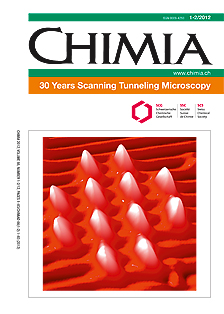The Art of Catching and Probing Single Molecules
DOI:
https://doi.org/10.2533/chimia.2012.52Keywords:
Molecular electronics, Scanning tunneling microscopy, Scanning tunneling spectroscopyAbstract
Probing the electronic properties of an individual molecule is a far from trivial task. In order to measure, for instance, the conductance of a single molecule, the molecule must be contacted by two nanoscopic electrodes. Here we will give two examples of how a single molecule can be caught between two metallic electrodes. In the first example the conductance of a single octanethiol molecule is measured by trapping the molecule between an atomic Pt chain on a semiconductor surface and the apex of a scanning tunneling microscope tip. In the second example a Cu-phthalocyanine molecule is caught between two adjacent nanowires on a semiconductor surface. In this 'bridge' adsorption configuration the core of the CuPc molecule, i.e. the Cu atom, is fully decoupled from the underlying substrate. The electronic properties of the core of Cu-phthalocyanine molecule are probed with scanning tunneling spectroscopy.Downloads
Published
2012-02-29
Issue
Section
Scientific Articles
License
Copyright (c) 2012 Swiss Chemical Society

This work is licensed under a Creative Commons Attribution-NonCommercial 4.0 International License.
How to Cite
[1]
H. J. W. Zandvliet, Chimia 2012, 66, 52, DOI: 10.2533/chimia.2012.52.







